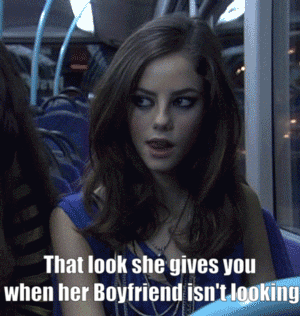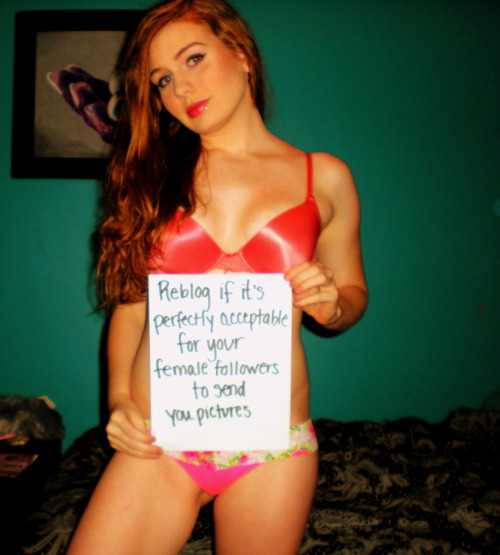Kaivenna - Just This Thing...nsfw

More Posts from Kaivenna and Others

Writing Good Villains

– Villains (or as intellectuals say, antagonists), are a huge part of every story, and many believe that it’s a simple job to create one. You simply throw some universal no-no’s into a pan, bake at 375 for 30 minutes, decorate with a face, name them something like Chernobog or Lilith, and then write a scene or two where they kill someone or blow something up and you’re done. That is, simply, not the case. Here’s a guide to help you avoid a sad waste of an opportunity.
Ko-Fi || Masterlist || Work In Progress || Request
Make Your Villains People
They are individuals, with a past and family and demons of their own. They’ve fought their own battles, suffered their own losses, and been through their own share of pain. They have good traits and bad traits, just like the heroes of your story. Unfortunately, the bad traits have taken over in their case and resulted in harm to others. Your villains need to be well rounded characters. I’ve said this before, but villains are just like anybody else in the following three ways:
They are facing something we don’t know about and cannot understand
They are feeling things we aren’t aware of and, again, cannot understand
They are riddled with contradictory personality traits that they struggle to find balance between every single day
Show these things to your reader, because the best villains of all time have been the ones that we feel torn up about, simply because we relate to them in a way that reveals something about ourselves, or we understand them in a way that makes us feel conflicted.
They Got There Somehow
People are not born evil. People are not born with values and morals and personal beliefs. Villains are people, and they got to the point they’re at somehow. You need to make that somehow clear to the reader. Maybe they grew up in a country where those beliefs are common, but the villain took them and applied action. Maybe your villain was hurt by someone or something and is now out to get revenge for all the pain they went to because of it. Show your reader the humanity behind the actions and they will hold so much more power.
Good Villains Have A Point
Maybe not a moral one, or even a reasonable one, but a point that we could see, nonetheless. The best villains are the ones that have beliefs that come from a place we can fathom. Yes, there are classic tropes of “daddy issues” or abusive childhoods or things like that, but the true test of a good villain is the way they make your readers question their own values and beliefs. You have to present a good argument on both sides of a conflict, or the conflict comes off as pointless, and for the sake of conflict instead of resolution.
Make Your Villain Strong
Your villain needs to at least match the hero’s strength, in one way or multiple. For instance, if you’re writing a superhero story and your hero has powers but your villain doesn’t, give that villain some power that the hero doesn’t have and never could. Make it difficult. Easy conflict resolutions are boring, especially in the case of a villain-hero dynamic. Watching a strong, good-hearted hero beat a weak, 2-dimensional evil villain is like watching an ant get squashed by a boot, except way more drawn out.
Make a Strong Link Between The Hero and The Villain
This could be done in multiple ways. Maybe the hero and the villain are family members, or used to be very close, or love someone in common. Or, maybe your villain and hero share many characteristics, morals, and personality traits, but have very opposite approaches to accomplishing the same goal. Watching two complete strangers have a conflict is boring because there’s no opportunity for plot twists or internal struggle.
Please Avoid Monologuing
Your reader will facepalm immediately at any hint of monologuing. You know you have an amateur villain when they a.) drag out their plans for stupid reasons instead of just meeting their goal(s) and b.) lay out their entire plan for the hero when they think there’s no possible way their enemy could ever escape, even though their security measures are rickety at best. Just.. don’t do this. Please. There are better ways of revealing information to your readers.
Make The Villain’s Scenes Enjoyable
Your reader doesn’t have to like your villain to enjoy the scenes they read involving them. Classic villains, like Loki, The Joker, Captain Hook, The Queen of Hearts, Gaston, even Cruella de Vil, all had traits that made them either relatable or entertaining, and that’s what made them so great. It’s easy to create a character that readers will hate. It’s not easy to also make that character entertaining. Bottom line is, a large part of your readers will be reading for the sake of just that: entertainment. Don’t skimp out on the villain. Those guys are a huge part of what makes a story a classic.
Show The Villain Being A Villain
This seems like it would be obvious, but it’s not. Too many times has there been a movie or a book where you see other characters talking about what the antagonist has done or said or believes, but you never actually see that individual doing things that make them so evil. I’m not saying you should include a scene where your villain just, like, mercilessly kills a puppy, but show your reader an instance where your villain is being the villain.
Support Wordsnstuff!
If you enjoy my blog and wish for it to continue being updated frequently and for me to continue putting my energy toward answering your questions, please consider Buying Me A Coffee.
Request Resources, Tips, Playlists, or Prompt Lists
Instagram // Twitter //Facebook //#wordsnstuff
FAQ //monthly writing challenges // Masterlist
MY CURRENT WORK IN PROGRESS (Check it out, it’s pretty cool. At least I think it is.)

Do you ever read, or have you ever read any queer sf/fantasy novels. If so, do you recommend any?
I want to point out that this isn’t comprehensive, just a few that I personally happen to like and recommend:

I assume by this question you mean stories that explicitlydeal with themes like gender and sexuality, as opposed to just stories thatdeal with other themes but have LGBT characters in them? Because if you meanthe second, I can’t recommend enough the work of David Gerrold, who often hashomosexual male characters in his novels in the 70s and 80s. If you only knowof Gerrold as the writer of the Tribble episode of Star Trek, you need to readhis fascinating scifi novels. “The Man Who Folded Himself” is a great novelabout a man who time travels so much that he has essentially “folded himself,”and multiple different versions of himself exist simultaneously. At one point,he has an orgy with multiple different versions of himself, which…certainly is oneway to deal with the issue of multiple versions of yourself existing (and a great way to characterize the hero as an incredible narcissist).

Also, I can’t recommend enough Gerrold’s War Against theChtorr series, which is maybe one of the most fascinating alien invasion novelsever as the invasion isn’t military, but ecological in nature…a hostile alienecosystem takes over and replaces our own in places, breeding insanely andwiping out native species. The Chtorr themselves seem to be based on thesandworms of Arrakis from Dune, but we discover they are very different in thatthey are not entirely animals…though not entirely sentient, either. It makessense if you read it. It also has characters who are homosexual men.
David Gerrold is one of these writers who spends all theirtime on the internet and is surprisingly accessible on social media. Word of warning, though,he’s become a bit of a cranky guy in his old age.
If you want a story that explicitly deals with themes ofhomosexuality, read Charles Beaumont’s “The Crooked Man” from 1955. Our herolives in a world where homosexuality is the norm, encouraged because it solvesoverpopulation; heterosexuals are despised and have to go into hiding in seedywindowless clubs, where they are a regular target of moralizing sanctimonious demagoguesand police raids, and worst of all, were sent to horrific torture chambers tobe “cured.”
Damn Knudson! Damn the little man! Thanks to him, to theSenator, Jesse was now a criminal.
Before, it wasn’t so bad–not this bad, anyway. You werelaughed at and shunned and fired from your job, sometimes kids lobbed stones atyou, but at least you weren’t hunted. Now–it was a crime. A sickness.
“Vice is on the upswing in our city. In the dark corners ofevery Unit perversion blossoms like an evil flower. Our children are exposed toits stink, and they wonder–our children wonder–why nothing is done to put ahalt to this disgrace. We have ignored it long enough! The time has come foraction, not mere words. The perverts who infest our land must be fleshed out,eliminated completely, as a threat not only to public morals but to society atlarge. These sick people must be cured and made normal.
“The disease that throws men and women, together in thisdreadful abnormal relationship and leads to acts of retrogression–retrogressionthat will, unless it is stopped and stopped fast, push us inevitably back tothe status of animals–this is to be considered as any other disease. It must beconquered as heart trouble, cancer, polio, schizophrenia, paranoia, all otherdiseases have been conquered…”
The Women’s Senator had taken Knudson’s lead and issued asimilar pronunciamento and then the bill became law and the law was carriedout.
Jesse sipped at the whiskey, remembering the Hunts. How thefrenzied mobs had gone through the city at first, chanting, yelling, bearingplacards with slogans: WIPE OUT THE HETEROS! KILL THE QUEERS! MAKE OUR CITYCLEAN AGAIN! And how they’d lost interest finally after the passion had worndown and the novelty had ended. But they had killed many and they had sent manymore to the hospitals …
He remembered the nights of running and hiding, choked drybreath glued to his throat, heart rattling loose. He had been lucky. He didn’tlook like a hetero. They said you could tell one just by watching himwalk–Jesse walked correctly. He fooled them. He was lucky.
One of the most interesting things that scifi does isexplore worlds where the shoe is “on the other foot,” one of the most powerfulempathic tools. Ray Bradbury wrote a great story about race issues that wasliterally called “On the Other Foot.”

Charles Beaumont is one of the great overlooked geniuses ofSF’s past. I’d say he was the single best writer of the Twilight Zone apartfrom Rod Serling himself, and I loved his scifi short story, “The BeautifulPeople,” which was adapted into one of the best episodes of the originalTwilight Zone. He’s due for a rediscovery.

Lois McMaster Bujold did a similar story in the 1980s, Ethanof Athos. Despite the way the cover makes Dr. Ethan look hardboiled as hell,the premise of the story is that he is a homosexual fertility doctor from asingle-gender male-only planet where homosexuality is the norm, and he isforced to leave his planet on an adventure where he encounters the first womanhe ever met in his life. Dr. Ethan was raised to consider women as devils, butchanges his mind when meeting them.

Another great story that dealt with homosexuality isTheodore Sturgeon’s “The World Well Lost” from 1953. In that one, an alien race is disgusted with humans and refuses contact with us for unknown reasons. They mysteriously broke the radiosilence to request that we transport back to them a pair of lovers from theirspecies (who we assume are male and female) who have delighted the entire planet Earth. Assigned to the job of returning the alien lovers are two earthmen spacepilots with very different personalities. The more introverted earthman herodiscovers that the alien lovers have a secret: they are both male andhomosexual. You see, members of their species have extreme physical differences betweenthe sexes. This is the reason their race refuses all contact with humans: totheir eyes, all humans, with our comparatively minimal gender differences, lookto them “like an entire species of queers.” When asked how the earthman herofigured all this out, it is revealed he is homosexual himself and in love withhis fellow earth pilot.






Cuckold Images at Vicious Rumors
-
 prurientinterest liked this · 3 weeks ago
prurientinterest liked this · 3 weeks ago -
 nveepy liked this · 4 weeks ago
nveepy liked this · 4 weeks ago -
 buckbuster liked this · 4 weeks ago
buckbuster liked this · 4 weeks ago -
 beasissynow liked this · 4 weeks ago
beasissynow liked this · 4 weeks ago -
 domnule33 liked this · 4 weeks ago
domnule33 liked this · 4 weeks ago -
 nanononame liked this · 4 weeks ago
nanononame liked this · 4 weeks ago -
 wasaswinger liked this · 4 weeks ago
wasaswinger liked this · 4 weeks ago -
 azbigben liked this · 4 weeks ago
azbigben liked this · 4 weeks ago -
 hotwifelife77 liked this · 1 month ago
hotwifelife77 liked this · 1 month ago -
 cv1104 liked this · 1 month ago
cv1104 liked this · 1 month ago -
 eroticoutbursts reblogged this · 1 month ago
eroticoutbursts reblogged this · 1 month ago -
 godardsghostheterodoxperv liked this · 1 month ago
godardsghostheterodoxperv liked this · 1 month ago -
 whitewifecheatingwithbbc liked this · 1 month ago
whitewifecheatingwithbbc liked this · 1 month ago -
 ryanmanning1492 liked this · 1 month ago
ryanmanning1492 liked this · 1 month ago -
 momgetthemeatloaf liked this · 1 month ago
momgetthemeatloaf liked this · 1 month ago -
 iamlost2014 liked this · 1 month ago
iamlost2014 liked this · 1 month ago -
 sm1984 liked this · 1 month ago
sm1984 liked this · 1 month ago -
 kaivenna reblogged this · 1 month ago
kaivenna reblogged this · 1 month ago -
 mywildesires liked this · 1 month ago
mywildesires liked this · 1 month ago -
 thisstuffthisstuff liked this · 1 month ago
thisstuffthisstuff liked this · 1 month ago -
 zanypainterbouquet-808b610f liked this · 1 month ago
zanypainterbouquet-808b610f liked this · 1 month ago -
 atrius1001 liked this · 1 month ago
atrius1001 liked this · 1 month ago -
 allthatglibbers reblogged this · 1 month ago
allthatglibbers reblogged this · 1 month ago -
 hotandbothered-stagandvixen liked this · 1 month ago
hotandbothered-stagandvixen liked this · 1 month ago -
 pdonsocial liked this · 1 month ago
pdonsocial liked this · 1 month ago -
 percsex reblogged this · 1 month ago
percsex reblogged this · 1 month ago -
 rossi1988 liked this · 1 month ago
rossi1988 liked this · 1 month ago -
 rjsloan123 liked this · 1 month ago
rjsloan123 liked this · 1 month ago -
 txcpl2112 liked this · 1 month ago
txcpl2112 liked this · 1 month ago -
 mr-j-id liked this · 1 month ago
mr-j-id liked this · 1 month ago -
 yoghue liked this · 1 month ago
yoghue liked this · 1 month ago -
 ph071 liked this · 1 month ago
ph071 liked this · 1 month ago -
 sexisgreatsstuff liked this · 1 month ago
sexisgreatsstuff liked this · 1 month ago -
 generoushusband414 liked this · 1 month ago
generoushusband414 liked this · 1 month ago -
 bentippas liked this · 1 month ago
bentippas liked this · 1 month ago -
 6nighthawk9 liked this · 1 month ago
6nighthawk9 liked this · 1 month ago -
 camicasrojo liked this · 1 month ago
camicasrojo liked this · 1 month ago -
 extremewomen liked this · 1 month ago
extremewomen liked this · 1 month ago -
 lcbk79 liked this · 1 month ago
lcbk79 liked this · 1 month ago -
 redmischief1 liked this · 1 month ago
redmischief1 liked this · 1 month ago -
 micanopy liked this · 1 month ago
micanopy liked this · 1 month ago -
 best0987 liked this · 1 month ago
best0987 liked this · 1 month ago -
 mraaalwaysfun liked this · 1 month ago
mraaalwaysfun liked this · 1 month ago -
 aaalways-fun-wives reblogged this · 1 month ago
aaalways-fun-wives reblogged this · 1 month ago
anything that makes my bi cock twitch not intended for anyone under 18
3K posts